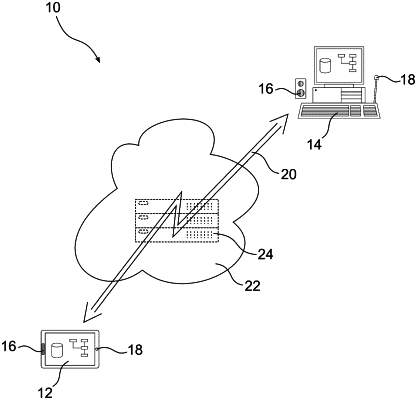| CPC G10L 21/0208 (2013.01) [H04L 5/1461 (2013.01); G10L 2021/02082 (2013.01); H04M 9/082 (2013.01); H04R 2499/15 (2013.01)] | 12 Claims |

|
1. A method for enhancing an audio signal in a full duplex communication system, the method comprising the following steps:
a) receiving a far end audio signal from a communication input;
b) forwarding the far end audio signal to an audio speaker;
c) receiving a near end audio signal from a microphone;
d) performing an echo reduction within a signal enhancement chain on the received near end audio signal using the far end audio signal;
e) forwarding the near end audio signal after the echo reduction to a communication output;
f) determining whether a residual echo still exists in the near end audio signal after the echo reduction, wherein determining the existence of residual echo includes a residual echo existence estimation that compares the near end audio signal after echo reduction with the far end audio signal again, and
g) if the existence of residual echo is determined:
attenuating the near end audio signal;
deactivating its forwarding to the communication output and/or
adjusting at least one parameter of the signal enhancement chain,
wherein the residual echo existence estimation compares the near end audio signal and the far end audio signal in a frequency domain and statistically analyzes the outcome,
wherein estimating the existence of residual echo comprises transferring time slots of the near end audio signal and the far end audio signal into the frequency domain thereby providing a plurality of time step dependent near end spectra and a plurality of time step dependent far end spectra,
wherein each time step dependent near end spectrum is compared to a plurality of time delayed versions of the time step dependent far end spectra by calculating a distance value d between the time step dependent near end spectrum and each of the plurality of time step dependent far end spectra, and
wherein calculating the distance value d is defined as:
d(X,Y)=∥N(C(X))−N(C(Y))∥
wherein X stands for the near end spectrum and Y for the far end spectra and where
C(X)=frequency window function keeping only an inner part of a spectrum between a first and second cutoff frequency
N(X)=X−mean(X)=zero-mean version of X with mean(X)=ΣωX[ω]/Σω1
∥X∥=√ΣωX[ω]2=Euclidean vector norm of X.
|